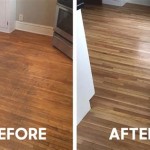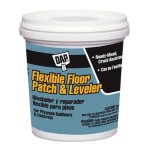12x24 Bathroom Floor Tile: A Comprehensive Guide
The selection of bathroom flooring is a critical decision in any renovation or new construction project. It involves weighing factors such as aesthetics, durability, water resistance, and cost. Among the various options available, 12x24 inch bathroom floor tiles have emerged as a popular choice, offering a balance of modern design and practical benefits. This article provides a detailed examination of 12x24 bathroom floor tiles, exploring their advantages, design considerations, installation nuances, and maintenance requirements.
Advantages of 12x24 Bathroom Floor Tiles
12x24 bathroom floor tiles offer several advantages over smaller or larger tile formats. These advantages stem from their size, which provides a unique combination of visual appeal and ease of installation.
Firstly, the larger format minimizes grout lines. Fewer grout lines create a cleaner, more seamless appearance, contributing to a more modern and sophisticated aesthetic. This is particularly beneficial in smaller bathrooms, where reducing visual clutter can make the space feel larger and more open. Fewer grout lines also translate to easier maintenance, as there are fewer areas for dirt and grime to accumulate.
Secondly, the 12x24 size strikes a balance between ease of handling and visual impact. Unlike extremely large tiles, which can be difficult to maneuver and require specialized installation techniques, 12x24 tiles are relatively easy to handle and install. This can reduce both installation time and labor costs. At the same time, the larger size still provides a more substantial visual impact than smaller tiles, creating a sense of luxury and spaciousness.
Thirdly, 12x24 tiles offer versatility in design. They can be installed in various patterns, such as running bond, stacked, or herringbone, to create different visual effects. This allows for customization and personalization of the bathroom design. The rectangular shape also lends itself well to creating a sense of directionality in the room, which can be used to visually lengthen or widen the space.
Fourthly, the size is conducive to creating a modern and sleek bathroom design. The rectangular shape and dimensions align well with contemporary design trends that favor clean lines and minimalist aesthetics. This makes 12x24 tiles a suitable choice for homeowners seeking to create a modern and stylish bathroom.
Design Considerations for 12x24 Bathroom Floor Tiles
While 12x24 tiles offer numerous advantages, careful consideration must be given to design aspects to maximize their impact and ensure a cohesive and aesthetically pleasing bathroom space.
Tile Material and Texture: The choice of tile material is paramount. Porcelain and ceramic are popular options due to their durability, water resistance, and wide range of available styles. Porcelain tiles are particularly well-suited for bathrooms due to their low water absorption rate, making them resistant to staining and cracking. The texture of the tile is also important. Textured tiles can provide better slip resistance, which is a crucial consideration in a wet environment like a bathroom. Matte finishes are generally preferred for bathroom floors due to their slip-resistant properties, while polished finishes can be used as accents or in less frequently trafficked areas.
Color Palette and Pattern: The color of the tiles should complement the overall bathroom color scheme. Neutral colors such as gray, beige, and white are popular choices for bathroom floors, as they provide a versatile backdrop for other design elements. However, bolder colors can be used to create a statement, especially in larger bathrooms. The pattern of the tiles can also significantly impact the overall look of the bathroom. Running bond patterns can create a sense of movement, while stacked patterns provide a more contemporary and minimalist look. Herringbone patterns can add visual interest and sophistication.
Grout Selection: Grout plays a crucial role in the overall appearance and functionality of the tiled floor. The color of the grout should complement the tiles and the overall bathroom color scheme. Darker grouts can help to conceal dirt and stains, while lighter grouts can create a cleaner and more modern look. Epoxy grout is a good option for bathrooms due to its water resistance and stain resistance, which helps to prevent mold and mildew growth. The grout line width should also be considered. Narrow grout lines can create a more seamless appearance, but they may require more precise tile installation. Wider grout lines can be more forgiving but may be more prone to accumulating dirt and grime.
Room Size and Layout: The size of the bathroom should be taken into account when selecting the tile layout. In smaller bathrooms, it may be beneficial to run the tiles lengthwise to visually lengthen the space. In larger bathrooms, more complex patterns can be used to add visual interest. The layout of the bathroom fixtures, such as the toilet, sink, and shower, should also be considered when planning the tile layout. Avoid creating awkward cuts around fixtures, and ensure that the tile layout is symmetrical and balanced.
Lighting: Lighting can significantly impact the appearance of the tiled floor. Adequate lighting is essential for showcasing the texture and color of the tiles. Natural light is ideal, but artificial lighting can also be used to create a warm and inviting atmosphere. Consider using recessed lighting to highlight the tiled floor and create a sense of spaciousness. Under-cabinet lighting can also be used to add a touch of elegance and functionality.
Installation and Maintenance of 12x24 Bathroom Floor Tiles
Proper installation and maintenance are essential for ensuring the longevity and beauty of 12x24 bathroom floor tiles. Careful attention to detail during the installation process can prevent future problems, such as cracking, chipping, and water damage. Regular maintenance can keep the tiles looking their best for years to come.
Subfloor Preparation: The subfloor must be clean, level, and stable before installing the tiles. Any irregularities in the subfloor can cause the tiles to crack or become uneven. If the subfloor is concrete, it should be thoroughly cleaned and any cracks or holes should be filled with a patching compound. If the subfloor is wood, it should be inspected for rot or damage and replaced if necessary. A cement backer board should be installed over the wood subfloor to provide a stable and waterproof surface for the tiles.
Tile Layout Planning: Before installing the tiles, it is essential to plan the layout carefully. Start by finding the center of the room and drawing a grid to guide the tile placement. Dry-lay the tiles to ensure that the layout is symmetrical and balanced. Adjust the layout as needed to minimize the number of cuts and create a visually appealing pattern. Take into account the location of fixtures and ensure that the tile layout is aligned with them.
Adhesive Application: Use a high-quality tile adhesive that is specifically designed for bathroom floors. Apply the adhesive evenly to the subfloor using a notched trowel. The notch size should be appropriate for the size and type of tile being installed. Work in small sections to prevent the adhesive from drying out before the tiles are placed.
Tile Placement: Place the tiles carefully onto the adhesive, pressing them firmly into place. Use tile spacers to ensure consistent grout lines. Check the level of the tiles with a level and adjust as needed. Wipe away any excess adhesive from the tile surfaces immediately. Allow the adhesive to dry completely before grouting.
Grouting: Once the adhesive has dried, remove the tile spacers and apply the grout. Use a grout float to work the grout into the grout lines. Wipe away any excess grout from the tile surfaces with a damp sponge. Allow the grout to cure for the recommended time before sealing. Seal the grout lines with a high-quality grout sealer to protect them from water and stains.
Cleaning and Maintenance: Clean the tiled floor regularly with a mild detergent and water. Avoid using harsh chemicals or abrasive cleaners, as they can damage the tile surface and grout. Wipe up spills immediately to prevent staining. Periodically inspect the grout lines for cracks or damage and repair as needed. Re-seal the grout lines every few years to maintain their water resistance.
Preventative Measures: Implement preventative measures to minimize wear and tear on the tiled floor. Use rugs or mats in high-traffic areas to protect the tiles from scratches and scuffs. Avoid wearing shoes with sharp heels or cleats on the tiled floor. Use furniture pads under heavy furniture to prevent damage to the tile surface.
By carefully considering the design aspects, meticulously installing the tiles, and implementing a regular maintenance routine, homeowners can enjoy the beauty and durability of 12x24 bathroom floor tiles for many years.

Calacatta Sky 12 X 24 Matte Porcelain Tile By The Flooring Factory

Veneto White 12 X 24 Matte Porcelain Tile Sample

Florida Tile Home Collection Oasis Beige Matte 12 In X 24 Rectified Porcelain Floor And Wall 425 6 Sq Ft Pallet Chdech0112x24p The

Msi Alexandra White 12 In X 24 Matte Porcelain Marble Look Floor And Wall Tile 2 Sq Ft Each Nhdalex12x24 The Home

Floors 2000 Marbles 12 In X 24 Porcelain Tile Silk Matte

Msi Alexandra White 12 In X 24 Matte Porcelain Marble Look Floor And Wall Tile 2 Sq Ft Each Nhdalex12x24 The Home

Veneto White 12 X 24 Matte Porcelain Tile Sample

Pietra Statuario 12x24 Polished Porcelain Shadesofstone Com

Arizona Tile Reside Usa 12 X 24 Porcelain

American Olean Mirasol 6 Pack Silver Marble 12 In X 24 Ceramic Wall Tile Ml721224wx1p







